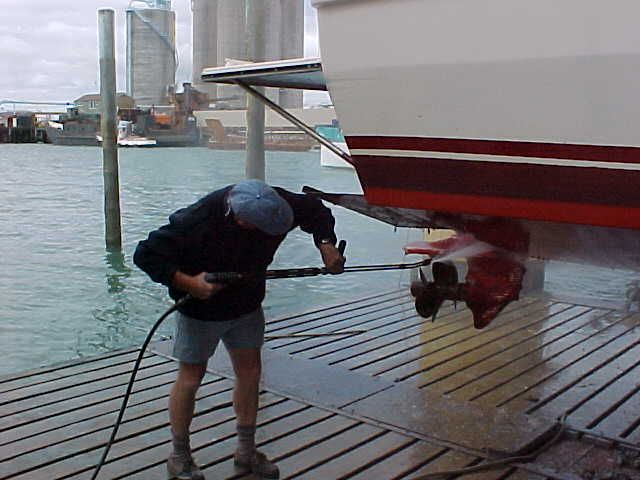
The first item that comes to mind with any boat owner is flushing with fresh water. Nearly every part that is exposed to harsh salt water or dirty fresh water should be cleaned. Boat parts are made to withstand both fresh and salt water, some better than others. This does create a problem though as even fresh water can damage some boat parts or even cause them to fail. Spraying every component would cause some parts to fail, if not right away then soon thereafter. A good rule of thumb is to take a garden hose spraying only those parts on the boat that would normally be exposed to the harsh environment. If the boat was used in salt water rinsing should be done as soon as possible to prevent the salt residue drying on any areas whatsoever. The number one cause of boat part failure is from the salty water drying which accelerates the corrosion process. As a matter of fact, some boats have been submerged in salt water completely and if they were salvaged in time, all of the parts were reusable. This is sometimes referred to as "pickling" an engine because the engine itself is sometimes salvageable.
Now those items that cannot be flushed with water are usually located behind enclosures of some sort. In the front part of the boat most items mounted behind the dash panel or controls mounted behind a sidewall or bulkhead should not be flushed. If the boat was manufactured using boat parts and not some other 'marine foreign' parts then the exposed areas can be flushed with water while care must be taken to clean those that are not exposed. Other parts such as wiring, control cables, and even sometimes bare wood must be treated differently. Sometimes a corrosion cleaner and brush can be used, but keep in mind most boat parts are lubricated. Some cleaners can dissolve a lubricant or corrosion inhibitor that was already there. All lubricants must be replaced properly and any corrosion inhibitor must be replaced if removed. Boat parts will last as long as intended, provided the environment is suitable and the components are properly maintained.
Special care must be taken for those boat parts located under the engine cover or on an inboard boat sometimes called a "dog house." This is probably one of the most critical components and contains a variety of boat parts. The electrical parts should never be flushed with fresh water unless it is completely necessary and then dried completely before use. Boat parts are electrically sealed, however most are not completely water proof. Corrosion is a constant battle in this area and some boat parts are constructed to withstand the elements and others don't seem to fair well. For those that do not fair well such as regular steel, a corrosion inhibitor product can be used. Take care here as some boat parts are rubber or plastic and some chemicals can cause damage to them. Never use a harsh solvent to clean and remember many use flammable propellant to spread a thin layer of oil on the components needing protection. A sealing product can also be used such as liquid electrical tape sealer, but once again, if using silicone or any product always read the labels to ensure the boat parts can resist any damage.
Boat parts can have a long life expectancy given the proper care and maintenance are regularly performed. Always perform routine maintenance such as flushing, lubricating, and preparing for a long life.